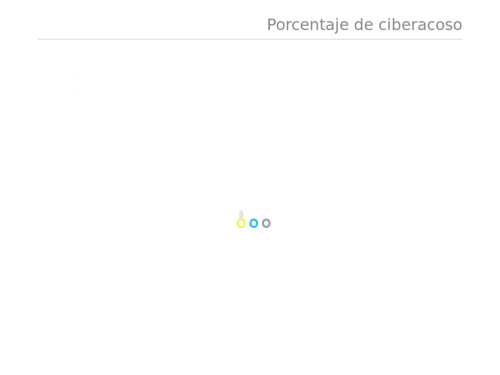
According to the 2020 Module on Cyberbullying of the National Institute of Statistics and Geography, of the more than 77.6 million internet users aged 12 and over, around 16.1 million of them have been victims of cyberbullying.
This represents 21% of the population that used the internet in 2020. The states with the highest percentage of this aggression were Colima, Tabasco and Tlaxcala, with 30.6, 28.4 and 28.3 percent respectively.
In contrast, the lowest rates were recorded in Nuevo León (19.2%), Puebla (28.3%), and Mexico City (16.3%).
It should be added that women were the sector most violated, since of the total number of complaints of cyberbullying, about 9 million were submitted by women while only 7.1 million men were victims of this type of violence.
The INEGI report details that the states with the highest percentage of women being harassed electronically are: Tabasco with 30.6%, Morelos with 28.4% and Colima with 28.3%.
The states with the lowest percentages are Nuevo León, Puebla and CDMX with 19.2%, 18.9% and 16.3% respectively.
Of the total number of women raped via socio-digital networks, 29.2% of women were between 12 and 19 years old, 29%. According to the data submitted by the institute, as age ranges increase, the percentage recorded decreases.

In contrast, for men, only 19.3% were harassed in 2020. The states with the highest rates in this case are: Zacatecas, Colima and Quintana Roo, with 26.5%, 26.4% and 25.1% each.
According to INEGI, cyberbullying (cyberbullying) is defined as “an intentional act, whether by an individual or a group, aimed at harming or disturbing a person through the use of technologies and information and communication (ICT) specifically on the internet”.
At the same time, he clarifies that cyberbullying can constitute a form of criminal victimization that can lead to “moral, psychological, and economic damage and even the intention of victims to end their lives.”
Among the situations that were most reported in 2020 were: sexual innuendo or proposal, contact using false identities, offensive messages and sending unsolicited sexual content.
It is followed, less frequently, by offensive calls, provocations to react negatively, account or website tracking and impersonation.
In 57.8% of cyberbullying cases, bullies were not identified, 24.5% managed to detect only known people, while in 17.8% both known and unknown persons were identified.

When at least one bully was identified, people with whom there was no close relationship were identified, that is, acquaintances of little treatment or only by sight (19.3%); people close or who could be trusted, such as friends (12.6%), classmates or work partners (9.7%), ex-boyfriend (a) or ex-partner (6.4%) and, finally, relatives (4.6%).
Of the victims who managed to identify the sex of the perpetrator, 59.4% of men and 53.2% of women reported that he was a man.
The main effect that cyberbullying situations cause to both women and men is anger with 68% and 58.8%, respectively; followed by the feeling of mistrust, with 38.4% and 32.3% for women and men, respectively.
According to the results, it was identified that the most frequent action taken in the face of cyberbullying is to block the person, account or page (70.1% for women, 52.9% for men), followed by ignoring or not answering (25% for women, 35.4% for men).
KEEP READING:
Últimas Noticias
Debanhi Escobar: they secured the motel where she was found lifeless in a cistern

The oldest person in the world died at the age of 119

Macabre find in CDMX: they left a body bagged and tied in a taxi
The eagles of America will face Manchester City in a duel of legends. Here are the details

Why is it good to bring dogs out to know the world when they are puppies




